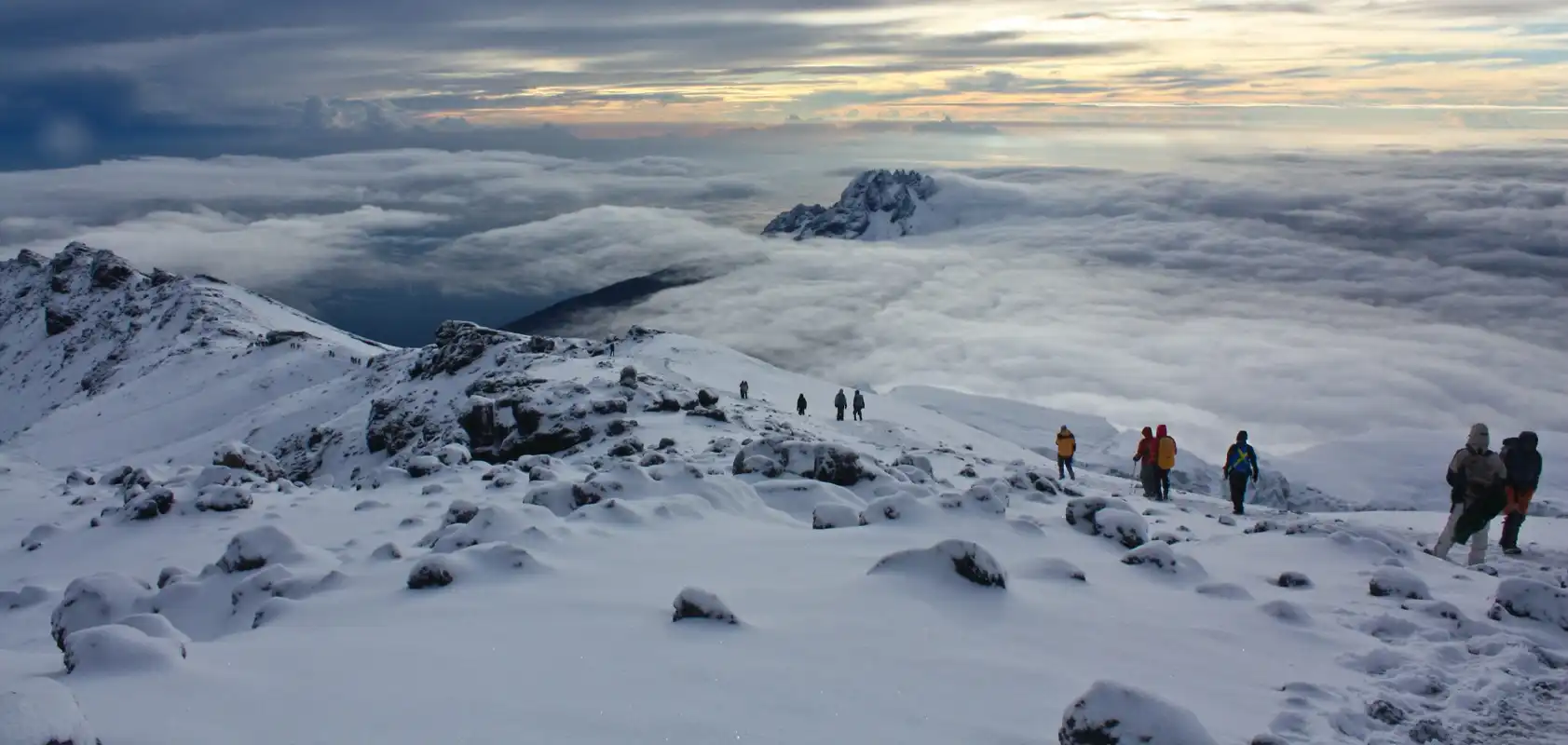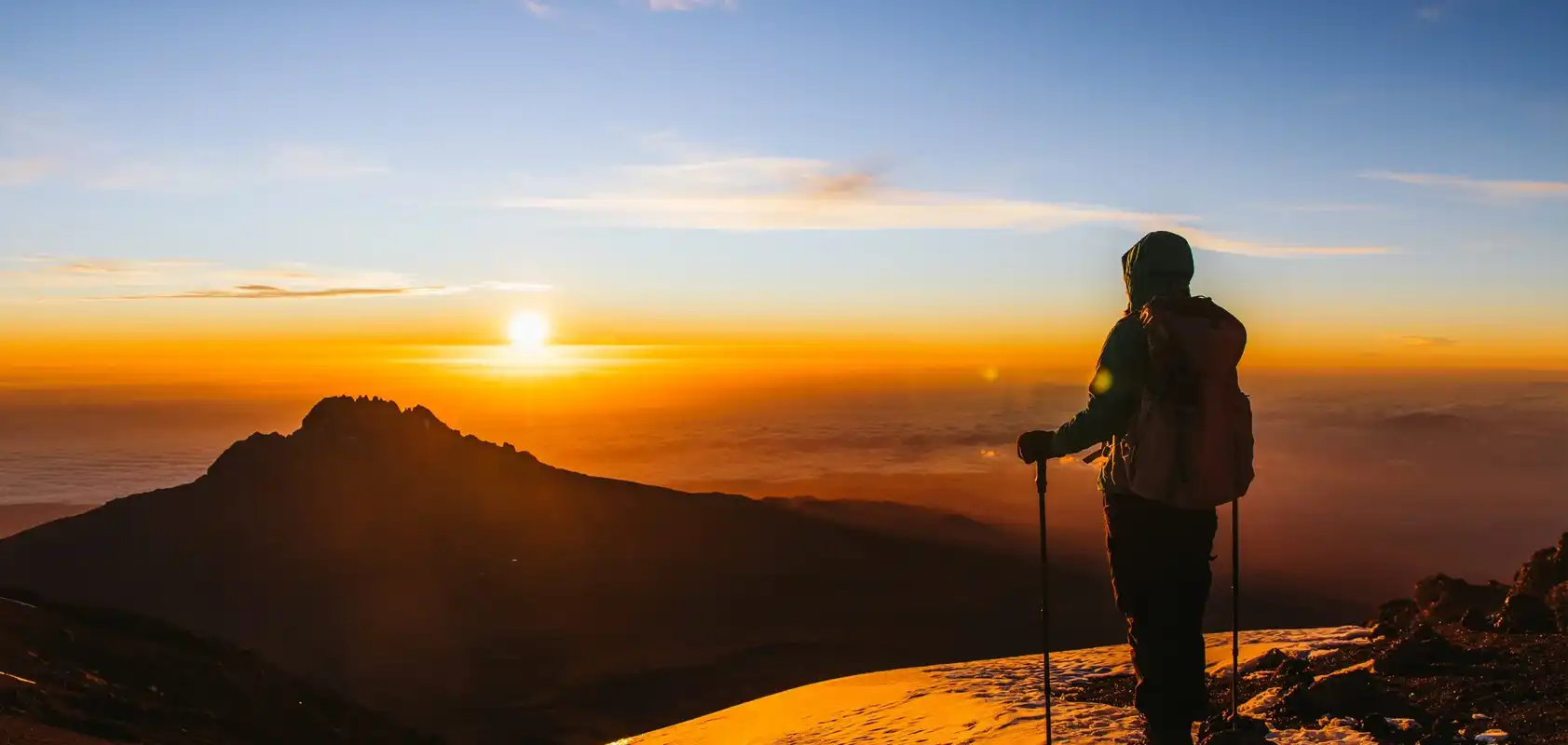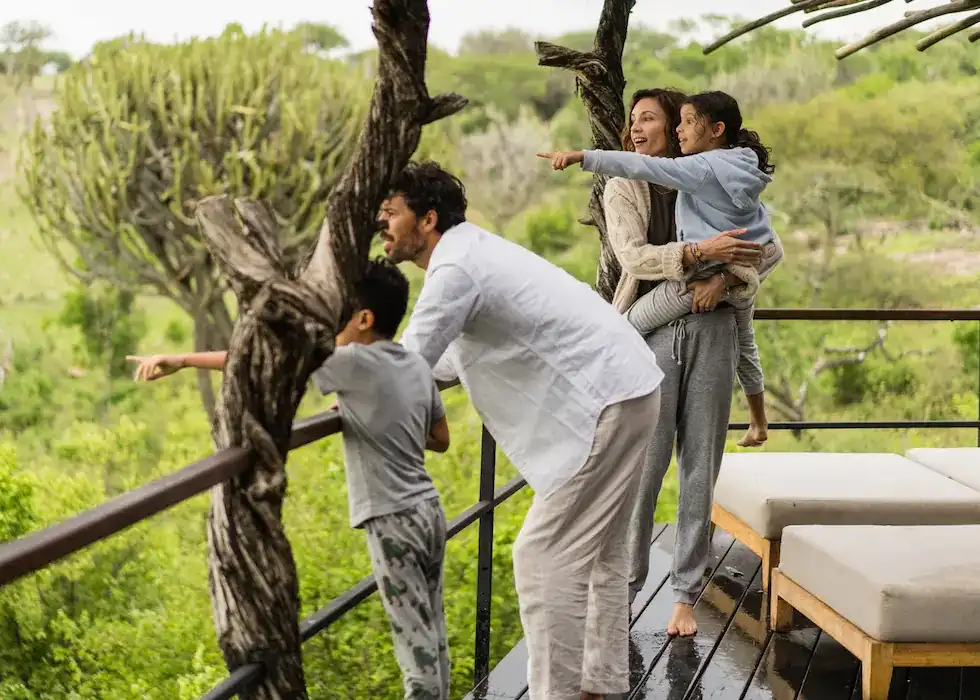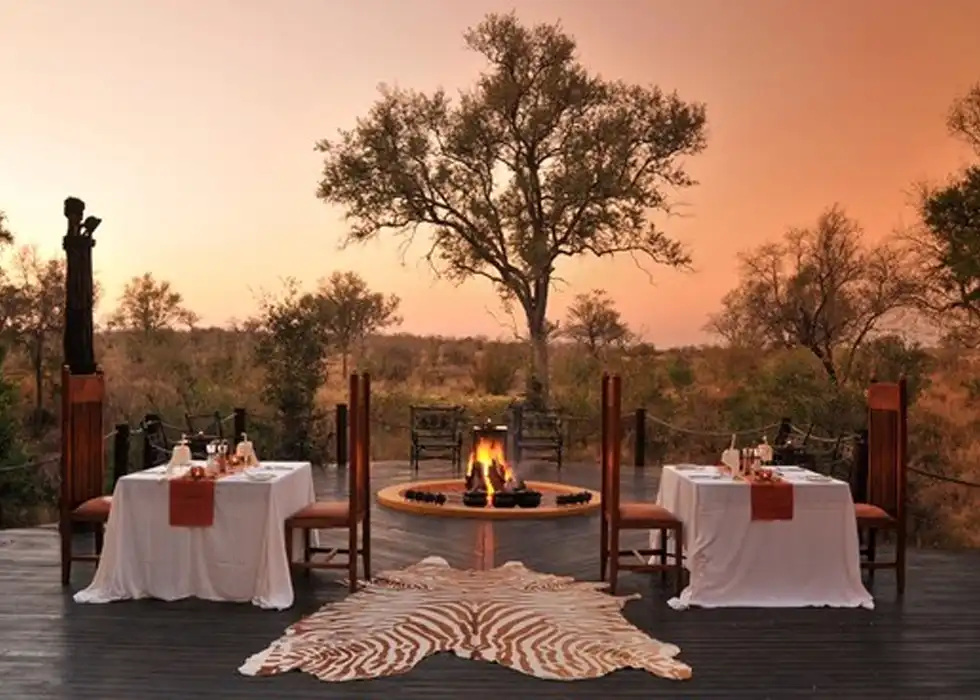Marangu Route
Marangu Route Overview
Often nicknamed the “Coca Cola” route for its popularity, the Marangu Route is the only Kilimanjaro route that uses the same path up and down, adding to the frustration of those trying to ascend and descend in the same space. The “Coca Cola” moniker also refers to the fact that the Marangu route is considered a much easier climb (at least, until the last day of the hike) via a comfortable walking path with a very steady, gradual slope, and therefore used by many unprepared tourists, rather than serious trekkers.
The Marangu Route begins in the southeast and approaches Uhuru Peak via Gilman’s Point, with the same trail being used in the descent. However, the biggest benefit of the Marangu Route is that there is hut accommodation. Though certainly not luxurious, this may be the best option for those who cannot camp, for whatever reason.

5 Days Marangu Route Itinerary
DAY 1: MARANGU GATE – MANDARA HUTS: 7k /mi | 4-5 hrs | Rainforest
Elevation: 1830m/6000ft to 2740m/9000ft
Departing from Moshi a 1-hour drive will take you through the Village of Marangu to the Kilimanjaro National Park Gate. We will patiently wait for our permits to be issued while watching the hustle and bustle of operations as many crews prepare for the journey ahead Enjoy the beautiful rainforest scenery and windy trails while your guide tells you about the local flora and fauna and natural wildlife. At these lower elevations, the trail can be muddy and quite slippery. We highly recommend gaiters and trekking poles here.
DAY 2: MANDARA HUTS – HOROMBO HUTS: 11km/3mi | 6-8hrs | Mooreland
Elevation: 2740m/9000ft to 3690m/12,100ft
After a good nights sleep and a hearty breakfast, we emerge from the rain forest and continue on an ascending path, through heathland, looking for giant lobelias and groundsels. Continue up into open moorlands where small shrubs are the main vegetation. Stop halfway for lunch, to enjoy amazing views of Mawenzi. Arrive at the Horombo Huts late afternoon beneath the spectacular Kibo Summit viewpoint. Temperatures begin to drop.
DAY 3: HOROMBO HUTS- KIBO HUTS: 10km/6mi | 6-8hrs | Semi-Desert
Elevation: 3690m/12,100ft to 4695m/15,400ft
After breakfast, we continue on through the dwindling heathland that blends into a moonscape as you enter the sweeping saddle connecting Mawenzi and Kibo. Here while we stop for lunch, and later when you cross this surprisingly large saddle, you can examine the summit climb up Kibo that you will be starting in just a few hours.
DAY 4: KIBO HUTS – SUMMIT: 4km /2.5 mi up | 5-7hrs | – HOROMBO HUTS: 14km /9mi down | 5-6hrs | Glaciers, Snow Capped Summit
Elevation: 4695m/15,400ft to 5895m/19,340ft
Descent to 3690m/12,100ft
Excitement is building as morning comes with an early start between midnight and 2 a.m. This is the most mentally and physically challenging portion of the trek.
We continue our way to the summit in a switchback formation through trying to stay warm and focused on the amazing sense of accomplishment that lies ahead. With a switchback motion, we ascend through heavy scree and possibly snow towards Gillman’s Point on the crater rim. You will be rewarded with the most magnificent sunrise during your short rest here. Faster hikers may view the sunrise from the summit. From here on your remaining 1 hour ascent to Uhuru Peak, you are likely to encounter snow all the way.
Congratulations, one step at a time you have now reached Uhuru Peak the highest point on Mount Kilimanjaro and the entire continent of Africa!
After photos, celebrations and maybe a few tears of joy we take a few moments to enjoy this incredible accomplishment. We begin our steep descent down to Mweka Camp, stopping at Barafu for lunch and a very brief rest. We strongly recommend gaiters and trekking poles for uncooperative loose gravel and volcano ash terrain. Well-deserved rest awaits you to enjoy your last evening on the mountain. Overnight Mweka Camp.
DAY 5: HOROMBO HUTS – MARANGU GATE – MOSHI: 18km/11mi |6-7hrs | Rainforest
Elevation: 3690m/12,100 to 1830m/6000ft
After breakfast and a heartfelt ceremony of appreciation and team bonding with your crew, it’s time to say goodbye. We continue the descent down stopping at the Mandara Huts for lunch. Remember to tip your guides, cooks, and porters, since you will be leaving them here. You return back to the Marangu Park Gate and receive your summit certificates. As the weather is drastically warmer, the terrain is wet, muddy and steep and we highly recommend Gaiters and trekking poles. From the gate, a vehicle will meet you to drive you back to your hotel in Moshi (about 45 minutes). Enjoy a long overdue hot shower, dinner, and celebrations!!
6 Days Marangu Route Itinerary
DAY 1: MARANGU GATE – MANDARA HUTS: 8.3km /5mi | 4-5 hrs | Rainforest
Elevation: 1905m/6250ft to 2723m/8934ft
Altitude gained: 818m
Departing from Moshi a 1-hour drive will take you through the Village of Marangu to the Kilimanjaro National Park Gate. We will patiently wait for our permits to be issued while watching the hustle and bustle of operations as many crews prepare for the journey ahead Enjoy the beautiful rainforest scenery and windy trails while your guide tells you about the local flora and fauna and natural wildlife. At these lower elevations, the trail can be muddy and quite slippery. We highly recommend gaiters and trekking poles here.
DAY 2: MANDARA HUTS – HOROMBO HUTS: 12.5km/7.8mi | 6-8hrs | Mooreland
Elevation: 2723m/8934ft to 3721m/12,208ft
Altitude gained: 998m
After a good nights sleep and a hearty breakfast, we emerge from the rain forest and continue on an ascending path, through heathland, looking for giant lobelias and groundsels. Continue up into open moorlands where small shrubs are the main vegetation. Stop halfway for lunch, to enjoy amazing views of Mawenzi. Arrive at the Horombo Huts late afternoon beneath the spectacular Kibo Summit viewpoint. Temperatures begin to drop.
DAY 3: HOROMBO HUTS
You can spend a full day and a second night at Horombo. On this day, you can either rest at the huts or take a stroll up to the Mawenzi base camp then return to the Horombo Huts. This extra day will help your acclimatization, and further your understanding of the mountains weather and altitude. After your pause, you will continue up to the Kibo Huts on your fourth day for your midnight start to the summit.
DAY 4: HOROMBO HUTS- KIBO HUTS: 10.5km/6mi | 6-8hrs | Semi-Desert
Elevation: 3721m/12,208ft to 4714m/15,466ft
Altitude gained: 993m
After breakfast, we continue on through the dwindling heathland that blends into a moonscape as you enter the sweeping saddle connecting Mawenzi and Kibo. Here while we stop for lunch, and later when you cross this surprisingly large saddle, you can examine the summit climb up Kibo that you will be starting in just a few hours.
DAY 5: KIBO HUTS – SUMMIT: 6.25km /3.9 mi up | 5-7hrs | – HOROMBO HUTS: 15.75km /9mi down | 5-6hrs | Glaciers, Snow Capped Summit
Elevation: 4714m/15,466ft to 5895m/19,341ft
Altitude gained: 1181m
Descent to 3721m/12,208ft
Altitude lost: 2174m
Excitement is building as morning comes with an early start between midnight and 2 a.m. This is the most mentally and physically challenging portion of the trek.
We continue our way to the summit in a switchback formation through trying to stay warm and focused on the amazing sense of accomplishment that lies ahead. With a switchback motion, we ascend through heavy scree and possibly snow towards Gillman’s Point on the crater rim. You will be rewarded with the most magnificent sunrise during your short rest here. Faster hikers may view the sunrise from the summit. From here on your remaining 1 hour ascent to Uhuru Peak, you are likely to encounter snow all the way.
Congratulations, one step at a time you have now reached Uhuru Peak the highest point on Mount Kilimanjaro and the entire continent of Africa!
After photos, celebrations and maybe a few tears of joy we take a few moments to enjoy this incredible accomplishment. We begin our steep descent down to Mweka Camp, stopping at Barafu for lunch and a very brief rest. We strongly recommend gaiters and trekking poles for uncooperative loose gravel and volcano ash terrain. Well-deserved rest awaits you to enjoy your last evening on the mountain. Overnight Mweka Camp.
DAY 6: HOROMBO HUTS – MARANGU GATE – MOSHI: 20km/12.5mi |6-7hrs | Rainforest
Elevation: 3721m/12,208 to 1905m/6250ft
Altitude lost: 1816m
After breakfast and a heartfelt ceremony of appreciation and team bonding with your crew, it’s time to say goodbye. We continue the descent down stopping at the Mandara Huts for lunch. Remember to tip your guides, cooks, and porters, since you will be leaving them here. You return back to the Marangu Park Gate and receive your summit certificates. As the weather is drastically warmer, the terrain is wet, muddy and steep and we highly recommend Gaiters and trekking poles. From the gate, a vehicle will meet you to drive you back to your hotel in Moshi (about 45 minutes). Enjoy a long overdue hot shower, dinner and celebrations!!
Kilimanjaro Climbing FAQ’s
Certainly! Here are some frequently asked questions (FAQs) about Kilimanjaro Climb:
How high is Mount Kilimanjaro?
Mount Kilimanjaro stands at 5,895 meters (19,341 feet) above sea level, making it the highest peak in Africa.
What is the best time to climb Kilimanjaro?
The best times to climb Kilimanjaro are during the dry seasons, which are from January to March and June to October. These months typically offer clearer skies and more stable weather conditions.
How long does it take to climb Kilimanjaro?
The duration of the climb depends on the route chosen, but most treks take between 5 to 9 days to complete. Longer durations allow for better acclimatization and increase the chances of successfully reaching the summit.
Do I need to be an experienced climber to climb Kilimanjaro?
No prior climbing experience is necessary, but a good level of physical fitness and mental preparation are crucial. Many climbers successfully reach the summit with the help of experienced guides and proper training.
What is altitude sickness, and how can I prevent it?
Altitude sickness, or acute mountain sickness (AMS), is a condition caused by the body's inability to adjust to the decreased oxygen levels at high altitudes. To prevent it, climbers should acclimatize gradually, stay hydrated, and consider taking altitude sickness medication if recommended by a healthcare professional.
What gear do I need to climb Kilimanjaro?
Essential gear includes sturdy hiking boots, warm clothing layers, a sleeping bag rated for cold temperatures, a headlamp, trekking poles, and a backpack. It's also important to have proper high-altitude gear like insulated jackets and gloves.
Which route should I take to climb Kilimanjaro?
There are several routes to choose from, each offering unique experiences and varying degrees of difficulty. Popular routes include the Machame Route, Marangu Route, Lemosho Route, and Rongai Route. The choice depends on factors such as your fitness level, budget, and preferences for scenery and solitude.
Do I need a guide to climb Kilimanjaro?
What accommodation options are available during the climb?
Accommodation on Kilimanjaro typically consists of tented campsites along the trekking routes. Some routes, like the Marangu Route, offer basic mountain huts with bunk beds. Luxury options, including premium tented camps, are available on certain routes for those seeking more comfort.
Is it safe to climb Kilimanjaro?
Climbing Kilimanjaro is generally safe when proper precautions are taken, such as choosing a reputable tour operator, acclimatizing adequately, and following safety guidelines. However, it's essential to be aware of the risks associated with high-altitude trekking, including altitude sickness and adverse weather conditions.
Speak To an Expert
Get advice and suggestions to make this your perfect trip.
Call: +41 774 84 047
Let's Chat on WhatsApp
DESIGN A TOUR
Mount Kilimanjaro Climbing Guide
Here, we’ve compiled crucial insights to prepare you for your Kilimanjaro climb. Find valuable hints, tips, tricks, and recommendations in our comprehensive guide, all offered free of charge. Dive in!
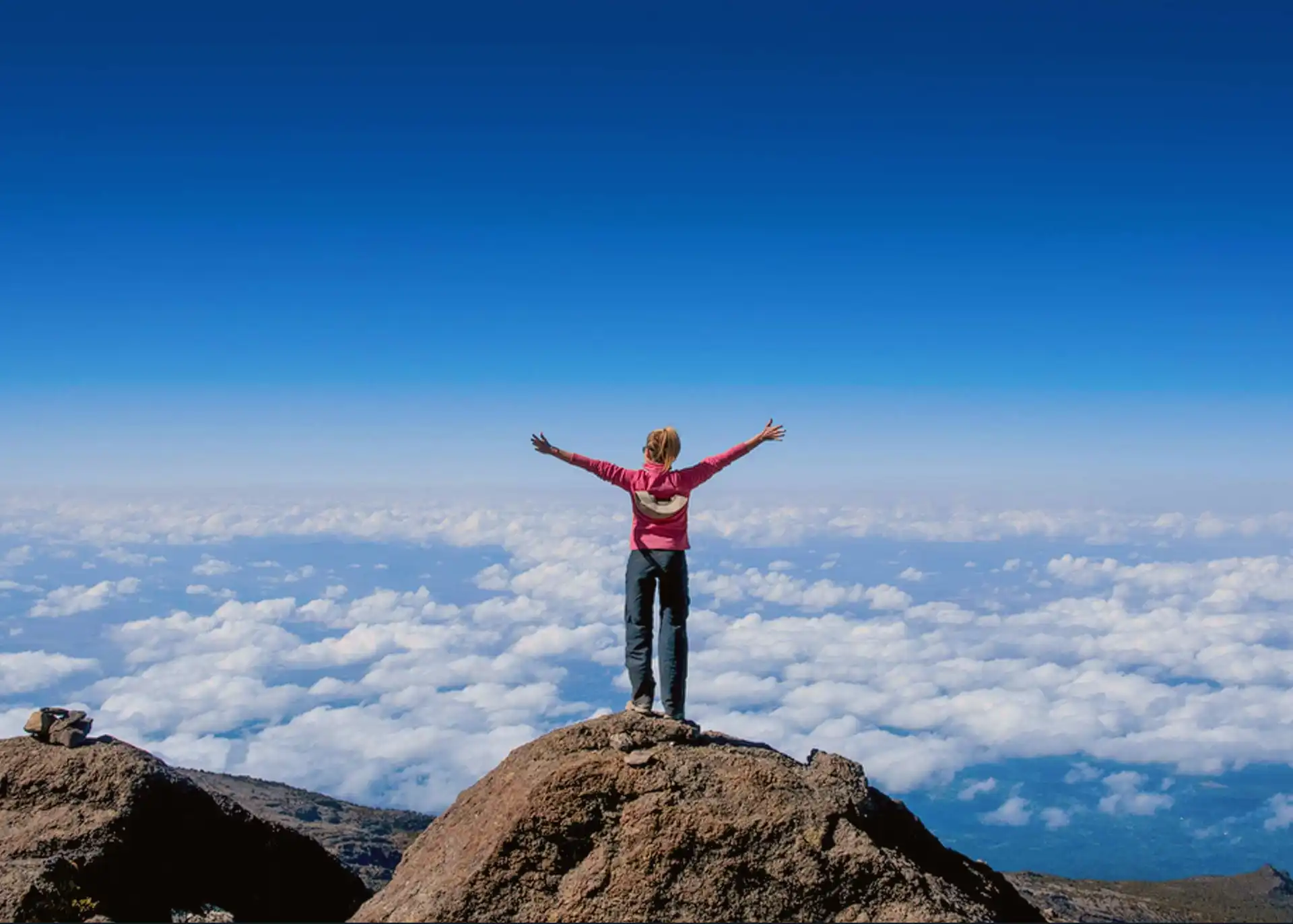
DISCOVER EXCLUSIVE TANZANIA SAFARIS
Tanzania Safari
Journey through the heart of Tanzania's wild landscapes with our expertly guided safaris
Kilimanjaro Climbing
Standing at 5,895 meters, the summit of Kilimanjaro is the highest point in Africa
Design your own trip
Let's Customize a Tour Based on Your Budget and Your Style


